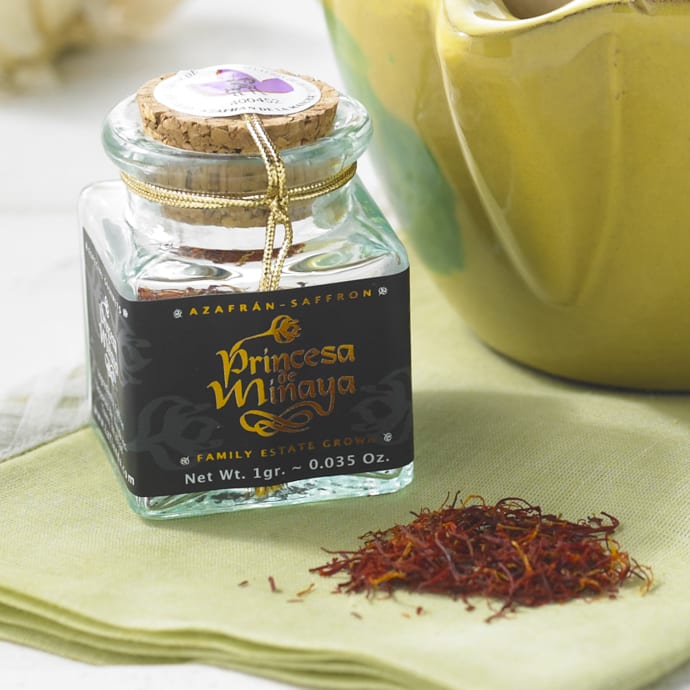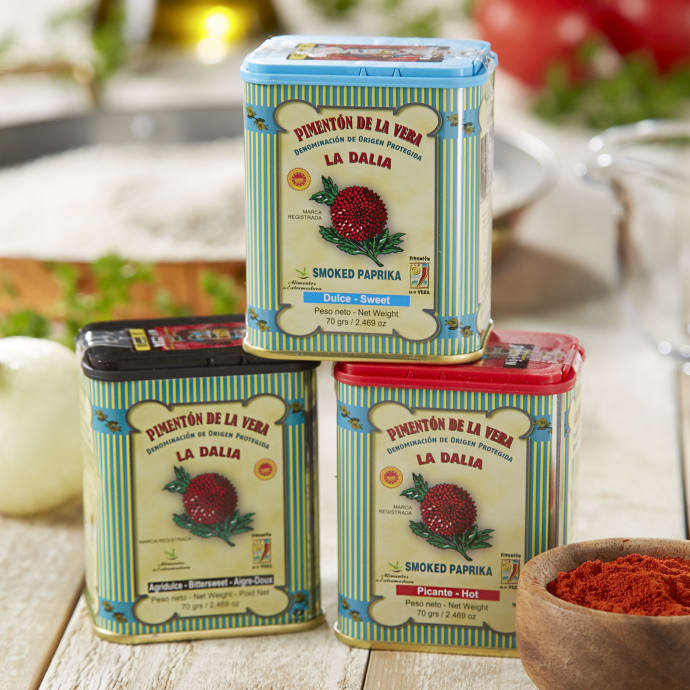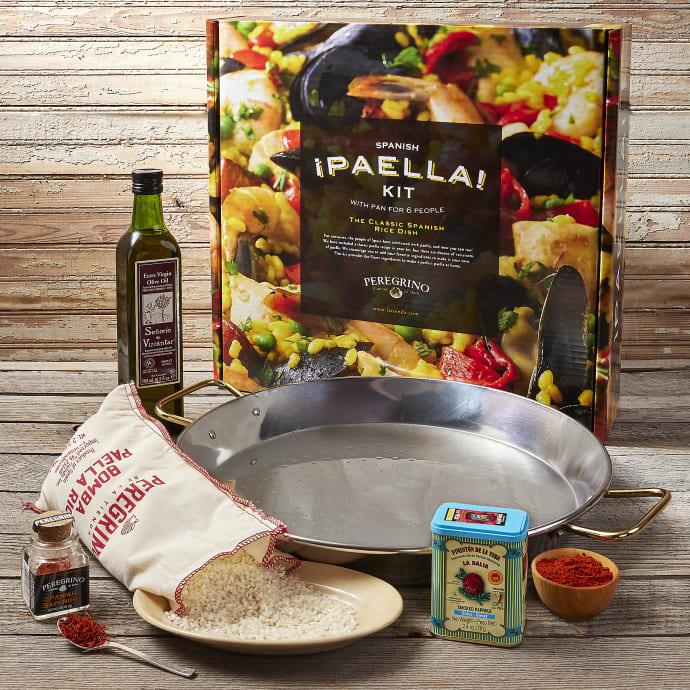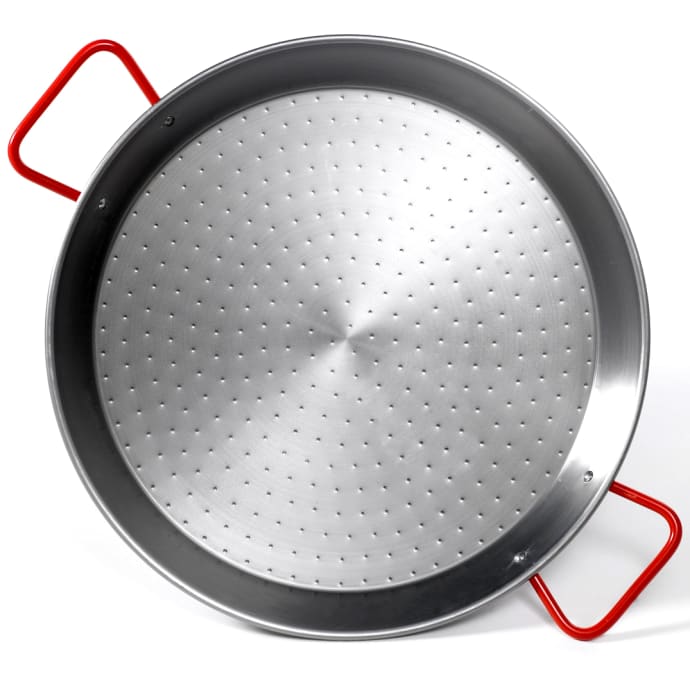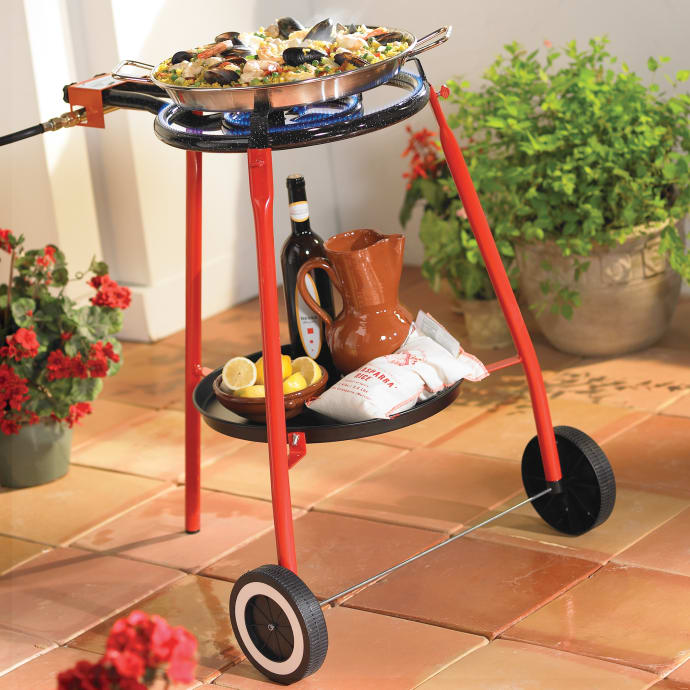Erica Marcus, Newsday Staff Writer
In the pantheon of great international party dishes, you'd be hard-pressed to find one more misunderstood than paella.
Here's what paella is not: It is not a yellow rice casserole. It is not a repository for all manner of meats and vegetables. It is not the Spanish national dish.
What paella is is a method of cooking rice, native to Valencia on Spain's eastern coast, that involves sauteing ingredients in olive oil in a wide, shallow pan, adding rice and liquid and then cooking, uncovered and with a minium of stirring, until the rice is just tender.
Penelope Casas, an authority on Spanish food (and the author of many cookbooks), explained that the name refers to the pan in which paella is cooked. "The paella - the pan - is wide and shallow," she said. "It is made from carbon steel, it heats up quickly, and over time it discolors and gets ugly-looking." (In other words, don't spend your money on a $200 paella pan; you can get the real thing for about $40.)
In Valencia, Casas said, there are restaurants devoted to making paella. Some make the dish in their kitchens, others use a specially made propane burner-on-a-tripod, still others cook paella in the most traditional way: over an open wood fire.
In her definitive book "Paella: Spectacular Rice Dishes From Spain" (Holt), Casas adapts traditional recipes for the American home cook. And she is bullish that a true paella requires nothing that can't be easily obtained in most supermarkets. "The only indispensable ingredients are rice, water and olive oil," she writes. "Everything else is the subject of endless debates and discussions by Spaniards."
When Casas published "Paella" in 1999, short-grain Spanish rice was hard to find on these shores. But the recent push by Spain to introduce its foods to Americans has brought many more imported products into specialty stores. Optimally, Casas would have us use the highest-quality Spanish short-grain rice, called Bomba, for paella. But she has also made entirely creditable - if unusually creamy - paellas with Italian Arborio rice; she particularly likes Beretta's Superfino brand.
The yellow color of some paellas comes from saffron, but Casas said that it is really a supporting player most of the time. Still, it's worth seeking out high-quality, authentic Spanish "thread" saffron that hasn't been pulverized into an orange powder. Ditto Spanish paprika - pimentón - which has a haunting, smoky quality all its own.
Casas labors mightily to combat the notion, widely held by Americans, that "paella is a random assortment of seafood, meat and vegetables." Even in Valencia, she said, restaurants now serve such "mixed" paellas "because the tourists want them," but the Valencians don't really approve of them. "By mixing, you detract from the integrity of the main ingredients," she said.
On the other hand, Valencia boasts an almost infinite variety of paellas, more than 60 of which Casas presents in her book. "Of course, there's a tremendous variety," she says. "Where paella comes from, they eat it every day."
THE MEAL UNFOLDS
Paella makes a show-stopping centerpiece for a special-occasion meal. Since it is fairly labor-intensive and must be completed at the last minute, the best strategy for serving it to company is to select accompaniments that require a minimum of effort, like opening a can.
As it happens, Spain is famous for its canned products. Consider serving stuffed olives (pimentos, almonds, cheese, tuna or anchovy paste are all common fillers), ventresca (tuna belly) preserved in olive oil, or piquillos, the distinctive pointy red peppers from the region of Navarra.
Spain produces a number of great cheeses, among them Manchego, a forceful sheep's milk cheese from La Mancha (like Don Quixote), Idiazabal, a smoked goat cheese from the Basque region, Tetilla, a mild cow's milk cheese from Galicia, and Cabrales, from Asturias, one of the world's great blues.
What goes better with cheese than ham? A few years ago, the U.S. Department of Agriculture lifted its ban on serrano, Spain's version of Italian prosciutto. The very best serrano, made from the hind legs of acorn-fed Iberico pigs, won't be available here until 2007, but in the meantime, you can buy chorizo sausage and lomo (cured pork loin) made from Iberico pigs.
Most specialty markets - Fairway, Whole Foods, Uncle Giuseppe's among them - stock a good selection of Spanish canned goods, cheeses and ham. You also can pay a visit to Despaña (two locations in New York; call 212-219-5050) or go online to latienda.com.
To drink, try a sampler of Spanish wines. Dorothy Jacobs of Pop's Wine & Spirits in Island Park suggested a quartet of reasonably priced selections. We started with a sparkling Cava, Codorniu Brut, Cuvée Raventós (about $10) and a crisp white Albariño, Rias Baixas, Martin Códax (about $14). With the clam paella, a rosé, Gran Feudo, Julián Chivite (about $10) and, with the Valencian paella, a classic Rioja, Marques de Riscal, Reserva (about $15).
You'll want a simple dessert, perhaps a flan, or, even simpler, vanilla or dulce de leche ice cream topped with toasted almonds.
- ERICA MARCUS




 BEST SELLER
BEST SELLER


 SALE
SALE
